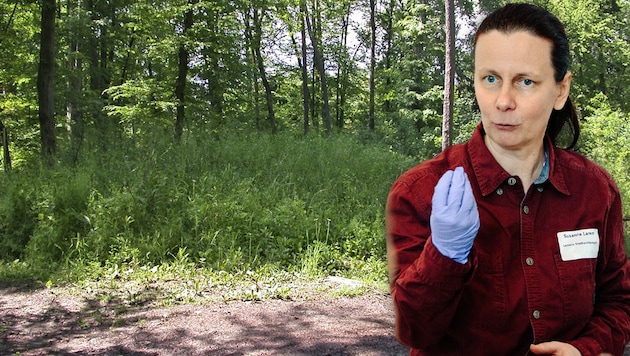Roman burial mounds
Sensation: Graz is sitting on historical treasures
Graz's Leechwald forest is home to hidden relics from the past: the burial mounds. In mid-March, the first archaeological tour on the subject was very popular. Archaeologist Susanne Lamm told the Steirerkrone what makes the graves from Roman times so special.
At first glance, the mounds in the Leechwald forest near the Hilmteich pond give no indication that these are traces from Roman times. However, the fascination among the people of Graz for the Roman graves is apparently greater than initially thought. In March, the first archaeological tour on the subject took place under the direction of the City Archaeology Department and in cooperation with the Margaretenbad neighborhood initiative and was extremely well received: "It almost feels like you're learning secrets that you wouldn't otherwise know. It's exciting how close to the modern city there are hidden things from the past," said Daniela and Zoe Schwarz, expressing their great interest.
The fascination for historical backgrounds defied the rain
Thirty minutes before the start of the tour, the square at Hilmteich, which had been designated as the meeting point, slowly but surely filled up. Claudia Beiser from the Grätzelinitiative began handing out the "Horcherlies", as she affectionately called the audio guides for the tour, and joked that there were only 50 of them, but that they would be fine in view of the rain clouds that were increasingly darkening the sky.
This estimate was far from accurate, as more and more interested people gathered despite the increasingly bad weather. In the end, there were around 120 people who wanted to catch a glimpse of the burial mounds and find out more about the background. Archaeologist Susanne Lamm therefore announced before the tour began that there would be another tour on the subject in late summer.
A link to the past
"The burial mounds in Leechwald are actually so unknown, even though they are so beautifully visible in the area," says the archaeologist. However, they weren't quite so unknown to some of the visitors on the tour, but they were still a bit of a mystery: "We used to go to Hilmteich for PE lessons at school. I knew that there were burial mounds somewhere around here, but not exactly where. Now I'm finally seeing them for the first time," said Kathi Brexel full of anticipation.
According to Susanne Lamm, the area around Leechwald and Hilmteich can be assumed to be an agricultural Roman settlement. "The Romans always built their burial sites within sight of their manor houses. Usually two to three hundred meters away," reports the archaeologist. There was probably also a Roman villa near St. Martin Castle, as there are also burial mounds there. However, unlike almost all other provincial capitals, Graz cannot be traced back to a Roman foundation. Instead, there was the town of Flavia Solva near Leibnitz to the south. Apart from that, there were many villages. For example in Bruck an der Mur or Kalsdorf.
Coins as ferry gifts under the tongue of the dead
The burial chambers in the hills are either a burial chamber made of wood and filled with earth or a stone chamber. There is also the variant that the dead bodies were laid on a flat surface and a mound of earth was piled on top of them, for example because the earth was frozen and burial would otherwise not have been possible. However, there was never a hollow space. The graves usually contain the remains of one or two people, cooking utensils, the remains of food and drink, oil lamps and a coin under the tongue of the deceased as ferry money for Charon, the ferryman.
The archaeologist knows that since 1900 it has become something of a popular sport to open up burial mounds, as people assumed that there were treasures in the graves, which is not the case. The mounds in the Leechwald were spared and should all still be intact.
What is Graz City Archaeology responsible for?
Graz City Archaeology was only founded in 2021. It is part of the Graz Museum and the number one point of contact for all finds on municipal land. The decisive factor for the foundation was the large number of contemporary historical finds that had come to light during the archaeological excavations carried out since 2017 in the former Liebenau camp and the former Reininghaus brewery site and the resulting question of how to deal with such a large number of mass finds.
Graz City Archaeology is also the point of contact for questions about finds on private property during gardening work or attic discoveries. There is an e-mail address set up especially for this purpose. "There have already been some very curious things," says Lamm.













Da dieser Artikel älter als 18 Monate ist, ist zum jetzigen Zeitpunkt kein Kommentieren mehr möglich.
Wir laden Sie ein, bei einer aktuelleren themenrelevanten Story mitzudiskutieren: Themenübersicht.
Bei Fragen können Sie sich gern an das Community-Team per Mail an forum@krone.at wenden.